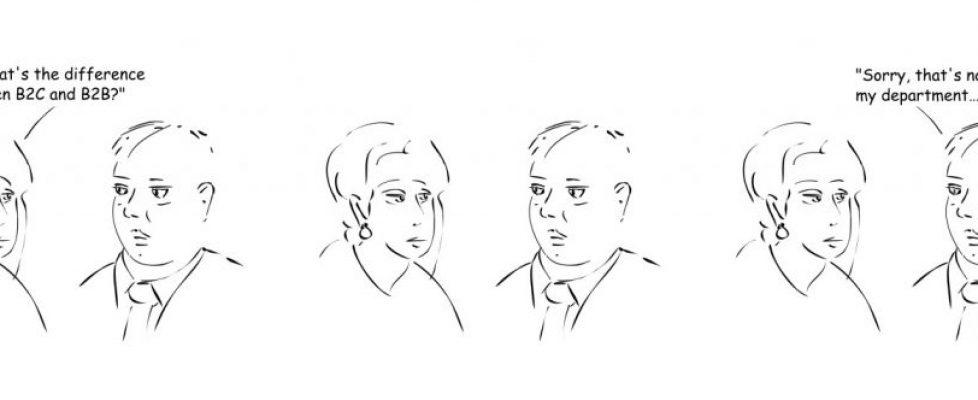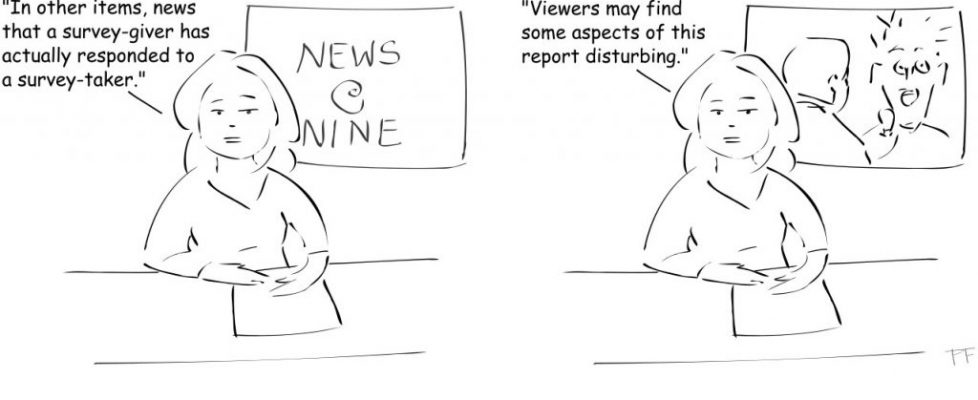Customer-centric cost reduction – there are just 3.5 ways to reduce cost
This post is about customer-centric cost reduction, an apparent oxymoron. It includes the list of the only 3.5 ways of sustainably cutting costs that exist.
Unfortunately, faced with a profitability crisis or a need to find money to invest, most companies want to sort our their P&L first, and worry about keeping customers onside later. That approach has a tendency to produce a corporate death-spiral. While you sacrifice customer happiness in the short term, your competitors may not. They will make it their business to find out where you are cutting costs and how that affects your customers. They will then go in and empathize, taking share from you. You then wind up with a predictable but unanticipated revenue problem, just as your cost-cutting exercise finishes. So, the next round of cost reduction starts. And so on. RIP.
There are only 3.5 ways of reducing costs. I will cover various methods of getting there in this and future posts, adding advice on how to avoid losing customers as you go about it.
Good and bad cost reduction
Unless you are in survival mode, where almost any cost reduction is good, a good cost reduction is one that either improves things for your customers, or simply one that they will never notice. Improving things can be as simple as being able to pass on lower costs as lower prices. Reductions that customers don’t notice concern areas with which they have no direct contact, for example your real estate costs, or the costs of regularly changing employees’ PCs. Bad cost reduction makes things worse for customers, whether by making a product or service worse, or putting them in regular contact with demoralized employees.
Ways to reduce costs
While this may seem surprising, there are exactly 3.5 ways of reducing costs. The first three are:
- Fewer people
- Lower costs of capital, such as real estate and inventory
- Pay your suppliers less
More about the 0.5 below.
Seems too simple?
This may seem too simple, but it is not. I have been taught many ways of making things more efficient and put most of them into practice. My bachelor’s degree is in Industrial Engineering, which is all about productivity and effectiveness. Over the years, I have improved hundreds, perhaps thousands of work processes. I started in the clothing industry which is absolutely obsessed with cost. I moved on to logistics and repair centers at Digital Equipment Corporation, before migrating to software, services, alliances and hardware at DEC, Compaq and HP. When Mark Hurd was CEO of HP, he was fanatical about cost reduction. Quite a lot (thankfully, not the majority) of the cost improvements we implemented over the years turned out not to make any real difference to our financial results. Here is why some projects failed: the people were still there, so the people costs did not change; all of the buildings were still there, so those costs did not change either; we continued to pay our suppliers the same amount, so those costs remained the same.
And two common ways cost-reduction initiatives fail
Many companies work out that they need to cut back in some areas to be able to invest in others. The two most common reasons for failure are:
- Inability to effectively communicate the purpose, scope and timing of the reductions to customers, investors and employees causes delay, customer defection and employee disengagement, durably damaging your business.
- Incompetent or inexperienced program managers define terms of reference, tasks, deliverables and milestones without involving the people who will have to do the work. All too often, this is driven by a misguided desire for total secrecy before the reductions are announced. If the people who will have to do the work do not also do the planning, there is absolutely no chance whatsoever that the reduction work will be completed as planned.
Change or no change
If you improve a work process, and do not change the number of people you have in a given location, the people costs do not change. They just spend part of their time doing nothing, or find unimportant new work to do. If you reduce the amount of space you need, but keep all the buildings, your real estate costs do not change. If you make fewer demands on your suppliers, but continue to pay them the same amount, those costs don’t change either.
‘Making it real’
I call the process of ensuring savings ideas turn into reality ‘Making it real’. In this process anyone with a reduction project should be able to describe which line of the P&L will be impacted, and exactly how. If less work is needed, what are the names of the people who will be let go, so the Cost of Sales or SG&A lines go down? If less space is needed, who will buy or rent the free space, or which buildings will we vacate? If the savings ideas just produce fractional differences spread across the entire population or all buildings, they are not worth pursuing.
Less is more
If you want to be pedantic, the first three items could be more accurately described as less people cost, less capital cost and paying suppliers less. If you move work offshore, you may reduce the cost, providing you let the onshore people go. If you move from an expensive city-center location to cheaper choices on the outskirts, you will reduce your real estate costs if you close the original building. Bear in mind that in these scenarios you will have both the old and new costs simultaneously for some period of time.
And the 0.5?
The remaining half a way of reducing cost is by making one-time accounting changes. You can change the accounting treatment of certain items. You can move your HQ to a low-tax jurisdiction. You can sell your buildings and lease them back. Since your competitors can do the same, it is debatable whether they produce sustainable competitive advantage.
I object
The objections I have heard to the above are mainly around the definitions. For example, if you make a process more efficient in a growing company, you may avoid hiring new people. That is true, but you have not actually reduced your absolute costs, which is the subject here.
Cost reduction versus cost avoidance
Cost avoidance may feel good, but it is usually not a real thing. We will cover one aspect of cost avoidance, more correctly a high-impact way of avoiding the need to reduce costs, in a future blog post. I learned about the specific method quite late in my career, as it is not intuitive. Cost reduction normally covers things that are mentioned in standard P&L, Balance Sheet and Cash Flow statements. There is one major opportunity to improve bottom-line profit that does not appear in any standard accounting statements.
Behavioral economics principles
Dan Ariely and Nobel-winner Daniel Kahneman
are two leaders in the emerging field of behavioral economics. Their research, and that of others in the field, show convincingly that humans do not behave as traditional economists would have us believe. As Ariely puts it, we are “predictably irrational”. Traditional economists would have us believe that people’s reactions to reductions will be equal and opposite to their reactions to gains. This is simply not the case, and future posts will cover the consequences in some detail. Humans’ aversion to losing something they already have is a major reason some cost reduction initiatives fail. Planning for it is essential.
We are talking about people
Reducing costs means taking away people’s space, reducing their benefits and perceived well-being, bringing fear to the workplace and sometimes ruining lives and breaking up families. As people managing cost reduction, our natural human tendency is to avoid dealing with it. Change management is an essential skill and some suggestions on how to do it will will be provided in future posts and in our book on cost reduction.
Customer-centric cost reduction
Even employees who are not at risk of job loss will be upset if they believe the changes put customers at risk. It has to be said that making large-scale reductions damages your brand and will make some customers believe you are not a safe supplier. Your competitors will be busy helping grow that perception. Think about your competitor talking to your customer saying “We are talking about a multi-year contract here. Look at what Acme has just announced. Are you sure they will still be around two years from now?”
If your employees also believe that the changes will have an unfavorable impact on customer perception of your products and services, that feeling will be communicated to your customers. To keep the maximum number of customers and employees on board, you need to understand how to put customers at the center of the reduction exercise, ensuring you make things better for them, or at least no worse, and that your entire team knows it. These are difficult messages to communicate, and even more difficult to put into practice. That is why our book and this blog exists.
As always, feedback is welcome. The drawing, at the top is by Peter FitzGerald. Learn more about his artwork on our illustrations page. If you want to be kept up to date, be sure to subscribe to our newsletter here.








